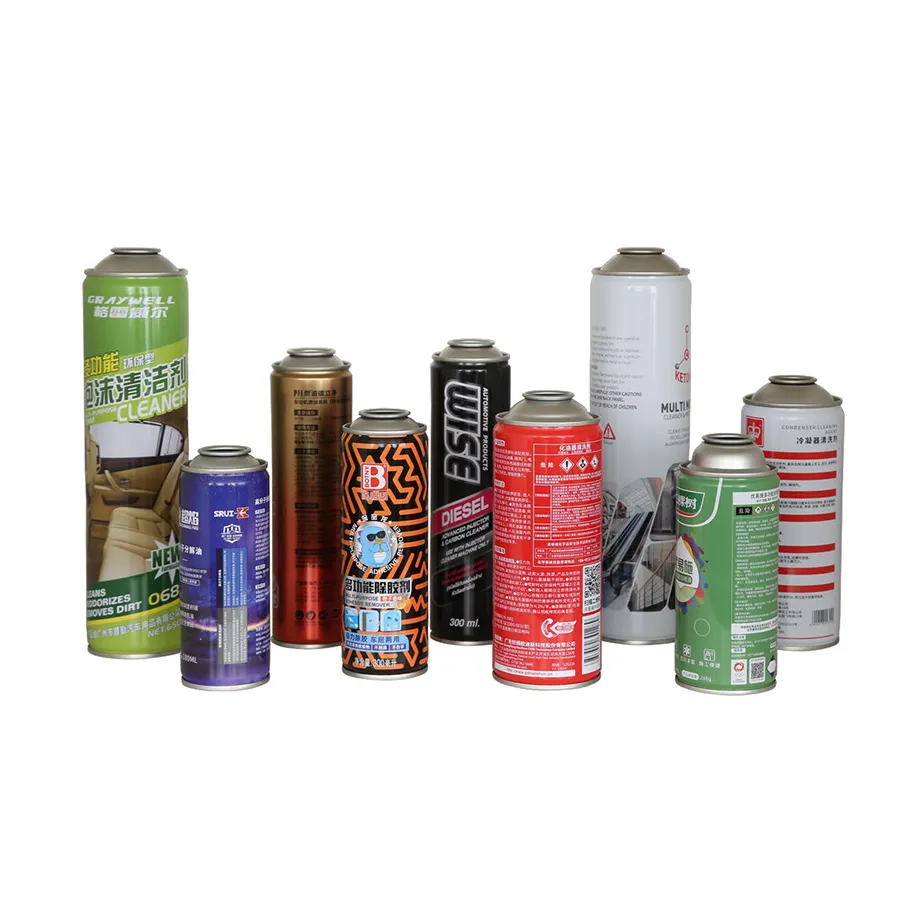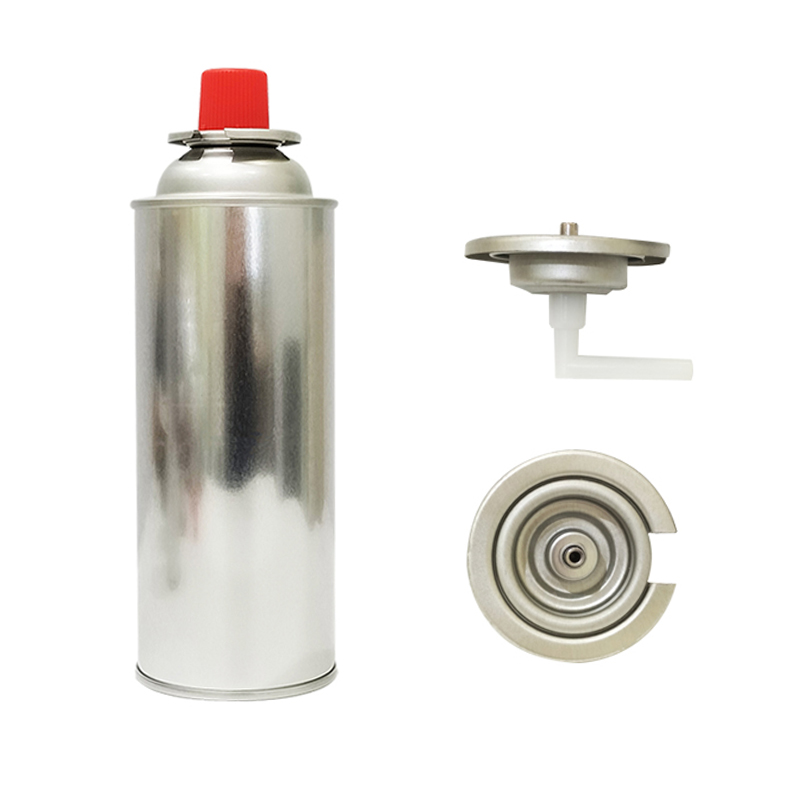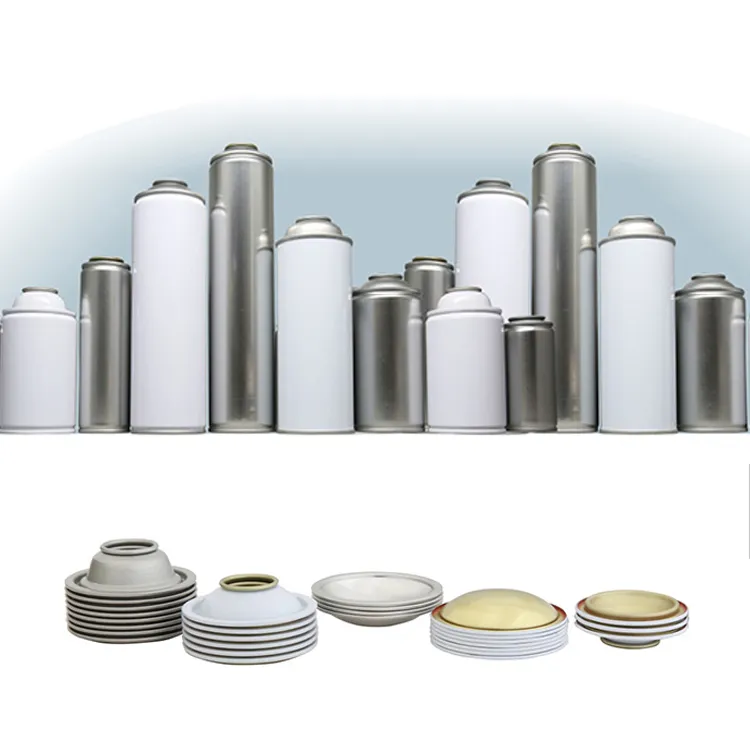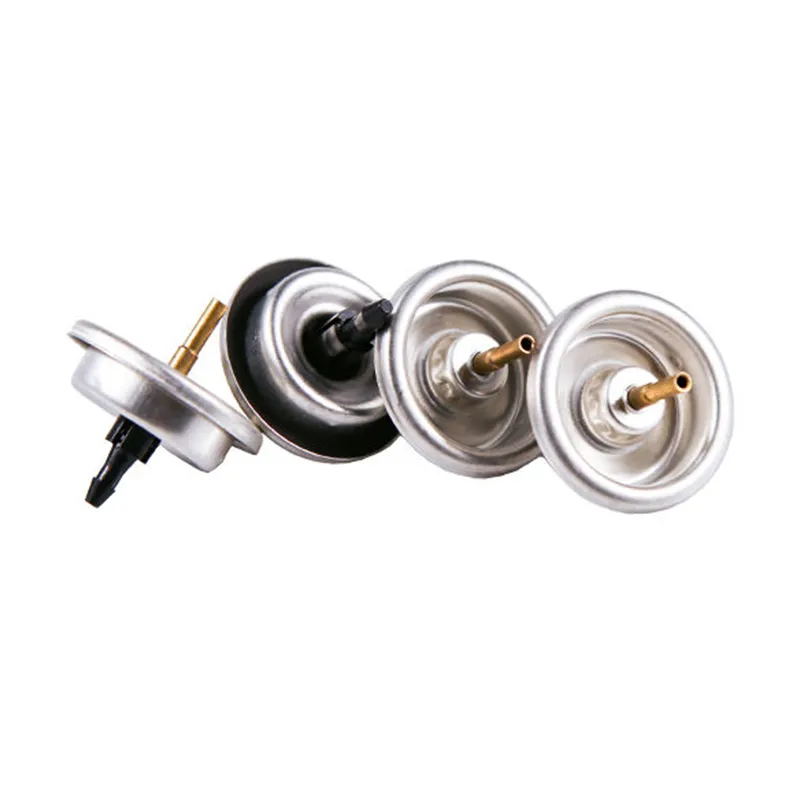For those concerned with packaging safety and aerosol can design, a common question is: How high an internal pressure can a three-piece aerosol can withstand? Especially for a three-piece design centered around a cone and dome structure, the maximum pressure resistance directly impacts user safety, regulatory compliance, and market reliability.
This article will analyze this from multiple perspectives, including regulatory standards, design structure, material processing, thermal expansion principles, and quality control.

What is the relationship between the structure and keywords of a three-piece aerosol can?
A cone and dome aerosol can typically consists of three main components:
· Can body: formed by rolling and welding tinplate sheets;
· Dome: mounted on the bottom of the can to withstand pressure;
· Cone: mounted on the top of the can and integrated with the valve assembly.
These three components work together to form an aerosol can, and its internal pressure resistance depends on the design, thickness, size, material, and assembly quality of these components.

Regulatory Standards: International Requirements for the Pressure Resistance of Three-Piece Aerosol Cans?
1. How does the U.S. DOT standard define the internal pressure limit for aerosol cans?
According to 49 CFR §173.306, metal aerosol cans must not exceed an internal pressure of 180 psig at 54.4°C (130°F), and the container must be able to withstand at least 1.5 times the thermal equilibrium pressure without rupture or deformation.
Specifically:
Container Type | Maximum internal allowable pressure (psig @ 130°F) | Minimum burst pressure (1.5×) |
Non-spec (2N) | ≤140 | ≥210 |
| DOT 2P | 140–160 | ≥240 |
| DOT 2Q | >160–≤180 | ≥270 |
The law requires labeling that the container design must meet the above minimum burst strength standards.
2. What is the significance of U.S. DOT 2P and 2Q classifications for three-piece aerosol cans?
· DOT-2P: The container is designed for a maximum operating pressure of 160 psig and requires a burst pressure of 240 psig or higher.
· DOT-2Q: The container supports operating pressures up to 180 psig, with a minimum burst strength of 270 psig or higher.
This means that for a three-piece aerosol can to meet the DOT 2Q standard, its structural design must incorporate both a cone and a dome. The overall strength of the three components of the tinplate aerosol can ensure safety.
How do the cone and dome ensure the pressure resistance of the aerosol can?
1. Why is the dome pressure-bearing structure so critical?
The dome is typically an arched or convex structure that evenly distributes internal pressure, thereby enhancing the pressure resistance of the base. It directly transmits pressure from the aerosol can's interior and can become a weak point if the material or structural design is poor. The pressure rating must support the maximum pressure value at high temperatures.
2. How does the connection between the cone and the dome affect the overall pressure resistance?
The cone connects the valve to the tank body, and the quality of the seal at the top joint directly impacts sealing performance. Under long-term, repeated exposure to high-pressure gas, improperly designed crimping of the cone joint can lead to leakage or structural instability.
3. How do tinplate materials and wall thicknesses match pressure resistance standards?
DOT 2P requires a wall thickness of at least 0.007 in (≈0.178 mm), while DOT 2Q requires ≥0.008 in (≈0.203 mm) to ensure no buckling or localized failure under the expected pressure. Three-piece cans are generally made of tinplate, with slight variations in thickness between the dome and cone, but the overall strength must meet the aforementioned standards.

Q&A Series: "How High a Pressure Can It Withstand?" - Expanding on Key Questions
1. What is the maximum internal pressure a three-piece aerosol can can withstand?
Three-piece aerosol cans meeting the DOT-2Q standard must not exceed an internal pressure of 180 psig (≈12.4 bar) at 54.4°C and must withstand pressures up to at least 270 psig (≈18.6 bar) without rupture or permanent deformation.
2. How do the pressure limits differ if DOT 2P is used?
DOT 2P containers are suitable for maximum internal pressures of ≤160 psig (≈11 bar) and must be designed to withstand pressures of ≥240 psig (≈16.5 bar).
3. What are the pressure capabilities of non-spec containers?
These containers are only suitable for operating conditions of ≤140 psig (≈9.7 bar) and must be designed to support a minimum burst pressure of ≥210 psig (≈14.5 bar).
4. What factors determine whether a three-piece aerosol can meets these pressure standards?
· Material thickness and quality (tinplate layer thickness, tempering, and defect-free);
· Cone and dome design shape and crimping process;
· Edge sealing technology and sealing structure;
· Thermal expansion testing and quality control during the production process.
5. How is high-temperature testing conducted? How is pressure resistance verified?
Regulations require a hot water bath test, heating the can to 131°F (≈55°C) and observing for leaks or deformation. For sensitive products, alternative testing may be required, but one in every 2,000 units must still be inspected to meet the high-temperature testing standard.
6. What is the safest material ratio for the cone and dome?
The dome is generally arched and slightly thinner, but its geometry provides high pressure resistance. The crimping of the cone must tightly connect the can body and valve. Material specifications are generally designed based on the aerosol can diameter, propellant type, and safety rating (DOT-2P/2Q).
Do aerosol cans of different diameters have the same pressure resistance?
Common diameters for aerosol cans include 52mm, 57mm, and 65mm. Three-piece cans of different diameters have varying wall thicknesses, dome shapes, and cone curling specifications. Larger cans typically use thicker tinplate sheets and reinforce the dome's curvature to withstand higher pressures.
How does the type of propellant affect the pressure-resistant design of aerosol cans?
When choosing liquefied propane, butane, or other propellant gases, the vapor pressure of the propellant at high temperatures varies. For example, butane rapidly increases in pressure at high temperatures, requiring the dome and cone to be designed to withstand the estimated maximum pressure and allow for sufficient thermal stability margin.
How do manufacturers in China implement quality standards for three-piece aerosol cans?
Many Chinese manufacturers, such as Dekai Metal Packaging, have established intelligent production lines for high-pressure aerosol cans, utilizing automated equipment and rigorous quality control procedures to ensure that the three-piece structure of the cone and dome, as well as the tinplate aerosol can, meets DOT 2Q design requirements. Furthermore, as a socially responsible company, Dekai utilizes environmentally friendly materials and processes, introducing advanced RTO thermal oxidation and environmentally friendly treatment equipment to contribute to protecting the global environment.

How do we ensure pressure resistance meets DOT 2Q standards?
1. Material Selection Process and Parameter Control
·Select tinplate coils with uniform tin plating, appropriate tempering, and no cracks;
·Strictly control the wall thickness of the dome and cone during manufacturing to ensure they do not fall below the standard;
·Strictly adhere to the printing and coating processes to prevent corrosion pits or surface defects that reduce strength.
2. The Importance of Stamping and Hemming Processes for Pressure Resistance
·When stamping the dome, ensure a uniform curvature to avoid weak areas;
·The tightness of the hemming between the cone and the can body determines the airtightness and seal strength;
·Automatic stamping and edge-sealing equipment requires calibration parameters to ensure batch consistency.
3. Post-Completion Pressure Testing and Quality Control Process
· At least one can from each batch will be sampled for hot water pressure testing;
· Comprehensive performance testing also includes airtightness, edge seal leakage, coating integrity, and dome deformation;
· Leakage and permanent deformation must be confirmed at 131°F, meeting DOT standards.
Can I buy aerosol can packaging in bulk?
Yes—Dekai is a major China-based manufacturer of aerosol cans with high-speed production lines for can forming, coating, valve assembly, lid fitting, and packaging. We supply bulk aerosol containers—gas, insecticide, lube, and spray—for the pharmaceutical, automotive, personal care, and industrial sectors.
Buyers can request quotes, MOQs, price lists, and receive promotions for large orders. With ISO9001 quality management and patented technology, we are a trusted supplier offering competitive pricing and capacity to support your brand’s supply chain.

